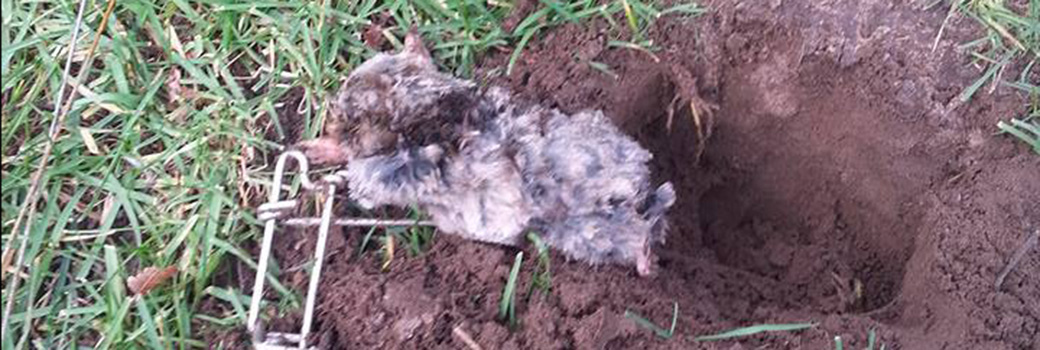- Riverside Educational Article of the Month - About moles
About moles
About moles
Moles are rather small Riverside mammals adapted to almost totally subterranean life. They have cylindrical bodies
with very velvety fur, tiny eyes and tiny ears, they usually have very small hindlimbs and very large and
powerful forelimbs which are equipped with very sturdy claws which they use for tunneling. An unusual fact
about moles is they actually have six fingers on their forelimbs, five of which have claws, the sixth appears
to be an extra thumb with no claw.

It took many years of study to figure out why California moles even came to the surface, they appeared to have everything
they needed to live permanently underground, but in the end the answer was pretty simple, their underground tunnels
gradually fill up with carbon dioxide which all mammals exhale, moles can tolerate much higher levels of carbon dioxide
than any other mammal but they still cannot breathe it on its own, so every now and again they have to surface to resupply
their oxygen, it is a bit like a whale, whales live in water but they still breath air and have to come to the surface to
get it.
A moles diet consists almost exclusively of what falls into its tunnels, which is mostly earthworms, a mole can sense when
an earthworm falls into one of its tunnels, it will rush there as fast as it can go and either eat the worm on the spot all
paralyze it and then take it to one of its storehouses. The moles saliva contains a toxin that can paralyze earthworms. In the
tunnel systems moles will construct chambers for storing paralyzed earthworms, these worms are still alive so they are fresh
food for whenever the mole gets hungry, some of these chambers when dug up have been found to contain up to 1000 earthworms.
Before eating an earthworm a Riverside mole will stretch the worm between their paws to force the worm to empty its gut.
Moles generally breed starting in February right through till May. The males do the searching by emitting high-pitched squeals
and tunneling through areas where they have never been before. Most California moles gestate for around 42 days and give birth to 3 to 5
young, most young are born in late March or early April. The young generally leave the birth nest from 30 to 45 days after birth
to find territories of their own.
Some species of moles are now on the endangered species list in the United States and Canada with the Townsend mole on the top of the list.
To learn more about our services, visit the Riverside wildlife removal home page.

